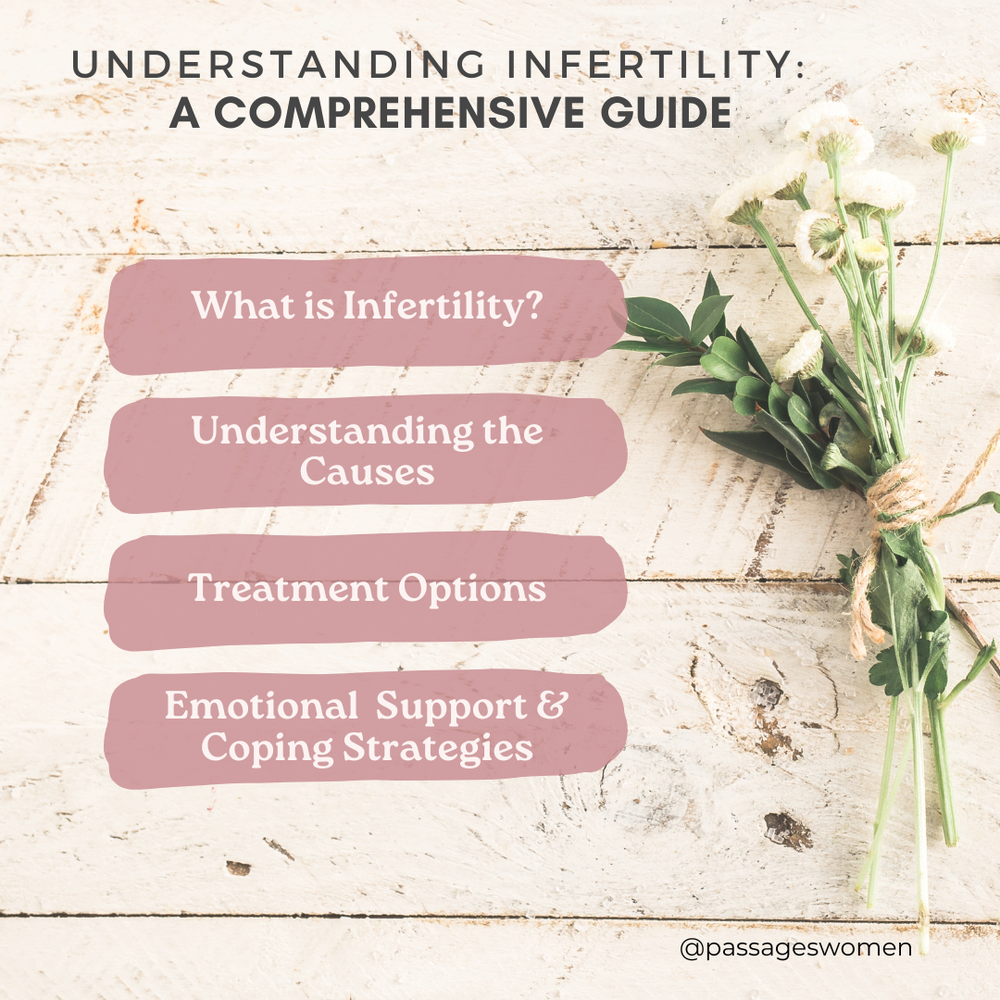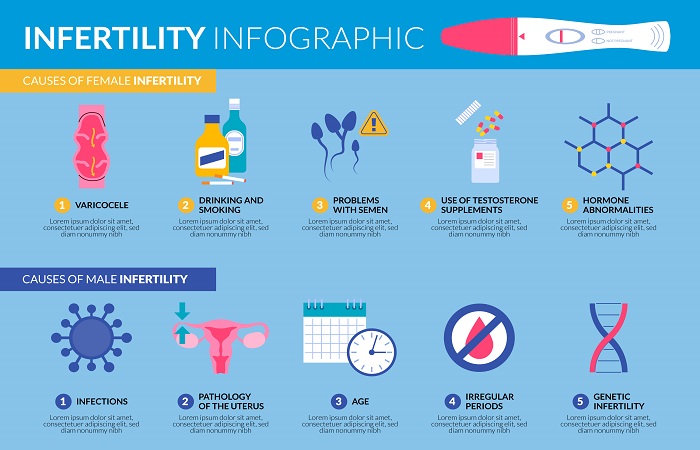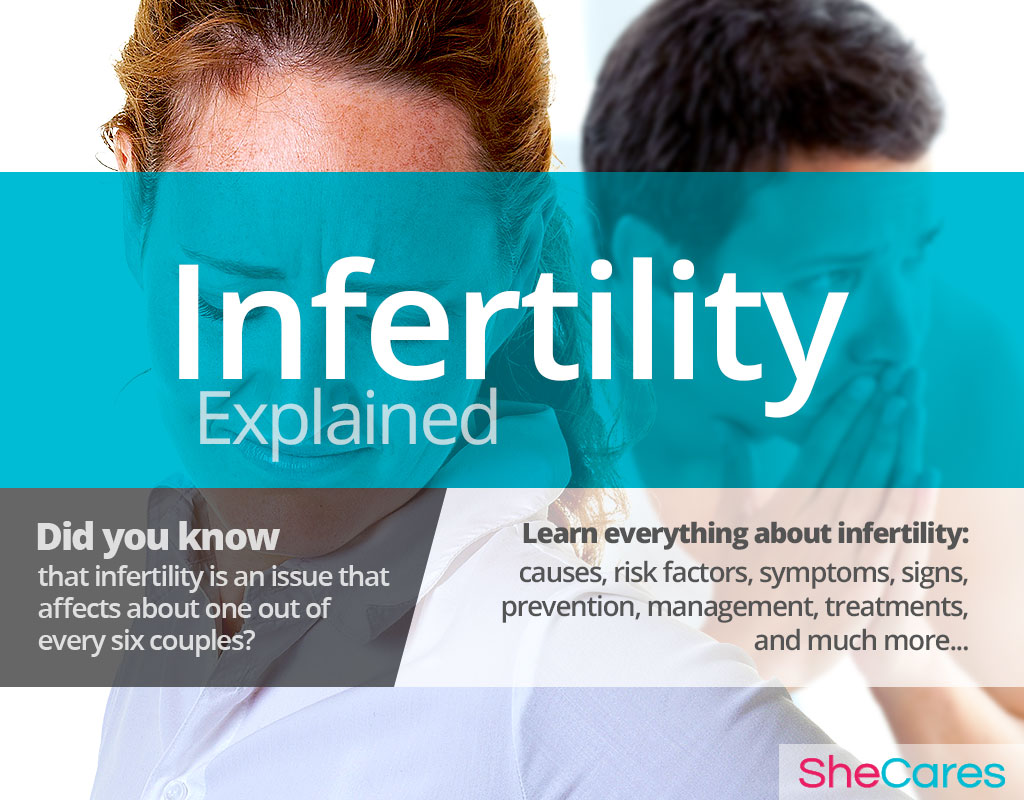“Understanding the Causes of Infertility: A Comprehensive Guide
Related Articles Understanding the Causes of Infertility: A Comprehensive Guide
- Best Sexual Wellness: A Comprehensive Guide To A Healthy And Fulfilling Sex Life
- Cutting-Edge AI-Powered Sleep Apnea Monitoring Devices: Empowering Health
- The Ultimate Guide To Healthy Breakfast Ideas: Fuel Your Body And Mind
- Unveiling AI's Impact on Fitness and Healthcare Wearables
- Healthy Meals For Kids: Fueling Growth, Development, And Happiness
Introduction
With great enthusiasm, we delve into Understanding the Causes of Infertility: A Comprehensive Guide, a subject that holds significance in today’s world. Whether you are new to this topic or looking to deepen your understanding, this article aims to offer valuable insights and spark curiosity.
Table of Content
Understanding the Causes of Infertility: A Comprehensive Guide

Infertility, defined as the inability to conceive after one year of regular, unprotected intercourse, affects millions of individuals and couples worldwide. It’s a deeply personal and often emotionally challenging experience. Understanding the underlying causes of infertility is crucial for diagnosis, treatment, and ultimately, achieving the dream of parenthood. This comprehensive guide delves into the various factors that can contribute to infertility in both men and women.
I. Infertility in Women: A Multifaceted Challenge
Female infertility is a complex issue with a wide range of potential causes, often stemming from problems with ovulation, the reproductive organs, or hormonal imbalances.
A. Ovulation Disorders: The Foundation of Fertility
Ovulation, the release of a mature egg from the ovary, is a critical step in conception. Disorders that disrupt this process are a leading cause of infertility in women.
Polycystic Ovary Syndrome (PCOS): PCOS is a hormonal disorder characterized by irregular periods, excess androgen levels (male hormones), and the presence of cysts on the ovaries. It disrupts ovulation due to hormonal imbalances, particularly insulin resistance, which can interfere with the normal development and release of eggs. Symptoms of PCOS can include irregular periods, acne, excessive hair growth (hirsutism), and weight gain.
Hypothalamic Dysfunction: The hypothalamus, a region in the brain, regulates the menstrual cycle by producing gonadotropin-releasing hormone (GnRH), which stimulates the pituitary gland to release follicle-stimulating hormone (FSH) and luteinizing hormone (LH). Disruptions to the hypothalamus, often caused by stress, excessive exercise, eating disorders, or significant weight loss, can lead to irregular or absent ovulation. This condition is known as hypothalamic amenorrhea.
Premature Ovarian Insufficiency (POI): POI, also known as premature menopause, occurs when the ovaries stop functioning normally before the age of 40. This results in a decline in estrogen production and irregular or absent ovulation. Causes of POI can include genetic factors, autoimmune disorders, chemotherapy, and radiation therapy.
Hyperprolactinemia: An excess of prolactin, a hormone that stimulates milk production, can interfere with ovulation. This condition can be caused by pituitary tumors, certain medications, or other underlying medical conditions.

B. Structural Issues: Obstacles to Conception

Problems with the fallopian tubes, uterus, or cervix can physically prevent fertilization or implantation.
Fallopian Tube Damage or Blockage: The fallopian tubes are responsible for transporting the egg from the ovary to the uterus. Damage or blockage of these tubes can prevent the egg from being fertilized or from reaching the uterus. Common causes of fallopian tube damage include:
- Pelvic Inflammatory Disease (PID): PID is an infection of the female reproductive organs, often caused by sexually transmitted infections (STIs) such as chlamydia and gonorrhea.
- Endometriosis: Endometriosis is a condition in which the tissue that normally lines the uterus (endometrium) grows outside of the uterus, often affecting the fallopian tubes, ovaries, and other pelvic organs.
- Ectopic Pregnancy: An ectopic pregnancy occurs when a fertilized egg implants outside of the uterus, most commonly in the fallopian tube.
- Prior Surgery: Previous surgeries in the pelvic area can lead to scar tissue formation that can block or damage the fallopian tubes.
Uterine Abnormalities: Abnormalities in the shape or structure of the uterus can interfere with implantation and pregnancy. These abnormalities can include:
- Uterine Fibroids: Uterine fibroids are noncancerous growths in the uterus that can distort the uterine cavity and interfere with implantation.
- Uterine Polyps: Uterine polyps are growths in the lining of the uterus that can also interfere with implantation.
- Septate Uterus: A septate uterus is a congenital condition in which the uterus is divided by a wall of tissue.
- Bicornuate Uterus: A bicornuate uterus is a uterus with two horns or cavities.
Cervical Issues: Problems with the cervix, such as cervical stenosis (narrowing of the cervical canal) or abnormalities in cervical mucus, can prevent sperm from reaching the uterus.
C. Endometriosis: A Painful Obstacle
Endometriosis, as mentioned earlier, is a condition where endometrial tissue grows outside the uterus. This tissue can cause inflammation, scarring, and adhesions, which can interfere with ovulation, fertilization, and implantation. Endometriosis is often associated with painful periods, pelvic pain, and infertility.
D. Age-Related Infertility: The Biological Clock
Female fertility naturally declines with age, particularly after the age of 35. This is due to a decrease in the number and quality of eggs. As women age, their eggs are more likely to have chromosomal abnormalities, which can lead to infertility or miscarriage.
E. Other Medical Conditions:
Certain medical conditions can also contribute to female infertility, including:
- Thyroid Disorders: Thyroid disorders, such as hypothyroidism (underactive thyroid) and hyperthyroidism (overactive thyroid), can disrupt hormonal balance and interfere with ovulation.
- Autoimmune Diseases: Autoimmune diseases, such as lupus and rheumatoid arthritis, can affect fertility by attacking the reproductive organs or interfering with hormone production.
- Chronic Diseases: Chronic diseases, such as diabetes and kidney disease, can also impact fertility.
II. Infertility in Men: Overcoming Male Factor Infertility
Male infertility is a significant contributor to overall infertility, accounting for approximately half of all cases. It typically involves problems with sperm production, sperm function, or the ability to deliver sperm to the female reproductive tract.
A. Sperm Production Issues: Quantity and Quality Matter
Sperm production, also known as spermatogenesis, is a complex process that can be affected by a variety of factors.
Varicocele: A varicocele is an enlargement of the veins within the scrotum, which can increase the temperature of the testicles and impair sperm production.
Infections: Infections, such as epididymitis (inflammation of the epididymis) and orchitis (inflammation of the testicles), can damage the reproductive organs and affect sperm production.
Undescended Testicles: Undescended testicles (cryptorchidism) occur when one or both testicles fail to descend into the scrotum during infancy. This can impair sperm production if not corrected early in life.
Genetic Defects: Genetic defects, such as Klinefelter syndrome (XXY) and Y chromosome microdeletions, can affect sperm production.
Hormonal Imbalances: Hormonal imbalances, such as low testosterone levels, can disrupt sperm production.
Exposure to Toxins: Exposure to toxins, such as pesticides, heavy metals, and radiation, can damage sperm.
Certain Medications: Certain medications, such as anabolic steroids, chemotherapy drugs, and some antidepressants, can impair sperm production.
B. Sperm Function Problems: Beyond the Count
Even if sperm count is normal, problems with sperm motility (movement) or morphology (shape) can affect fertility.
Poor Motility: Sperm need to be able to swim effectively to reach and fertilize the egg. Poor motility can be caused by a variety of factors, including genetic defects, infections, and exposure to toxins.
Abnormal Morphology: Sperm with abnormal shapes may have difficulty penetrating the egg.
C. Sperm Delivery Issues: Reaching the Destination
Problems with the delivery of sperm to the female reproductive tract can also cause infertility.
Ejaculatory Dysfunction: Ejaculatory dysfunction can include premature ejaculation, retrograde ejaculation (sperm entering the bladder instead of being expelled), and the inability to ejaculate.
Blockage of the Vas Deferens: The vas deferens is the tube that carries sperm from the testicles to the urethra. Blockage of the vas deferens can prevent sperm from being ejaculated. This can be caused by infections, surgery, or congenital defects.
Hypospadias: Hypospadias is a condition in which the opening of the urethra is located on the underside of the penis, which can make it difficult for sperm to reach the cervix.
Erectile Dysfunction: The inability to achieve or maintain an erection can prevent intercourse and make conception impossible.
D. Lifestyle Factors and Environmental Influences:
Certain lifestyle factors and environmental exposures can negatively impact male fertility.
- Smoking: Smoking can reduce sperm count, motility, and morphology.
- Excessive Alcohol Consumption: Excessive alcohol consumption can lower testosterone levels and impair sperm production.
- Drug Use: Drug use, particularly anabolic steroids, can severely damage sperm production.
- Obesity: Obesity can lead to hormonal imbalances and impair sperm production.
- Heat Exposure: Frequent exposure to high temperatures, such as in saunas or hot tubs, can negatively affect sperm production.
- Exposure to Environmental Toxins: Exposure to pesticides, heavy metals, and other environmental toxins can damage sperm.
III. Unexplained Infertility: When Answers Remain Elusive
In some cases, the cause of infertility cannot be identified despite thorough testing of both partners. This is known as unexplained infertility. It can be frustrating for couples, but it’s important to remember that treatment options are still available. It may be caused by subtle issues that are not detectable by current diagnostic methods.
IV. Diagnosis and Treatment: Seeking Expert Guidance
If you are experiencing difficulty conceiving, it’s essential to seek the advice of a fertility specialist. A thorough evaluation, including medical history, physical examination, and diagnostic testing, can help identify the underlying cause of infertility. Treatment options vary depending on the cause and may include:
- Lifestyle Modifications: Making changes to your lifestyle, such as quitting smoking, reducing alcohol consumption, maintaining a healthy weight, and managing stress, can improve fertility.
- Medications: Medications can be used to stimulate ovulation, improve sperm production, or treat underlying medical conditions.
- Intrauterine Insemination (IUI): IUI involves placing sperm directly into the uterus, increasing the chances of fertilization.
- In Vitro Fertilization (IVF): IVF involves fertilizing eggs with sperm in a laboratory and then transferring the resulting embryos into the uterus.
- Surgery: Surgery may be necessary to correct structural problems, such as blocked fallopian tubes or uterine abnormalities.
- Assisted Reproductive Technologies (ART): ART encompasses a range of techniques, including IVF, IUI, and other procedures, to help couples conceive.
V. Emotional Support: Navigating the Journey
Infertility can be an emotionally challenging experience. Seeking support from family, friends, support groups, or a therapist can help you cope with the stress and anxiety associated with infertility.
Conclusion: Hope and Empowerment
Infertility is a complex issue with a multitude of potential causes. Understanding these causes is the first step towards diagnosis, treatment, and ultimately, achieving the dream of parenthood. With the advancements in reproductive medicine and the availability of various treatment options, there is hope for many couples struggling with infertility. Remember to seek expert guidance, explore your options, and prioritize your emotional well-being throughout this journey.

